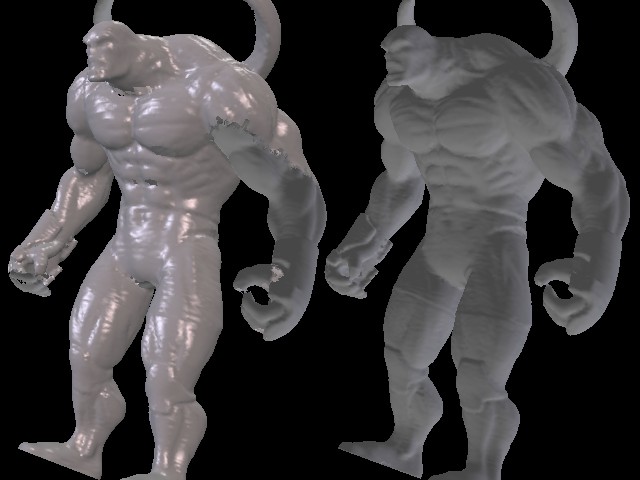 |

Submitted by , posted on 24 February 2005
|
 |

Image Description, by

These are two images of my diploma-thesis project. In advance: i ask for your
pardon concerning my poor english.
On the left you can see a triangular mesh with many defects, such as holes,
complex edges/vertices and intersections. The right picture shows the same mesh
after a mesh repair process. Since this is hot topic nowadays and there are some
publications out there: what's so special about this one?
The whole mesh repair process is based on the surface of the object, which leads
to some important advances in comparsion to volumetric methods. First of all the
points of the pointcloud upon which the triangle mesh is constructed are kept -
while volumetric methods tend to double, triple the point count. Second, the
quality of the repaired mesh is often higher. And third many problems related to
thin meshes are avoided - volumetric methods need a high sampling rate to
process such meshes.
The downside of the algoritm is that it's significantly slower (ca. 5 min. for a
mesh with 200000 triangles), consumes more memory (90 MB for a mesh with 200000
triangles) and is more difficult to implement.
The repair process is based on the method propossed by M. Wagner combined
with the work of P. Liepa.
Even though somewhat modified to avoid complex vertices in the output, and other
heuristics in the pre-/postprocessing steps to get a better shaped output mesh.
The whole system is implemented upon the OpenMesh library, which was extended
with a new mesh kernel, that can handle non-manifold meshes. The source and the
program are going to be public when i finished my thesis.
Greets,
Gerd Gro▀mann
|
|

